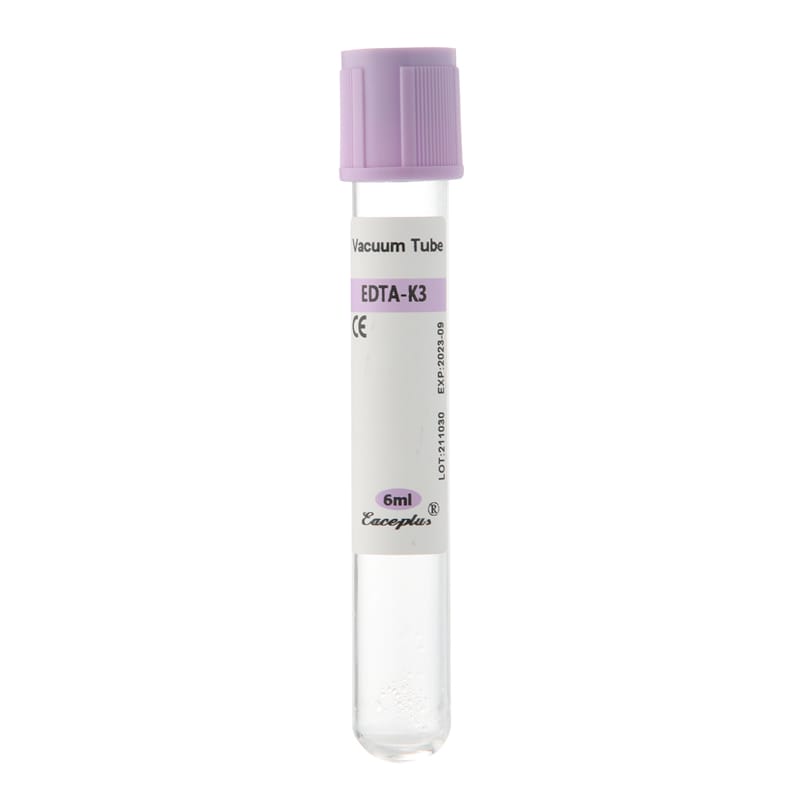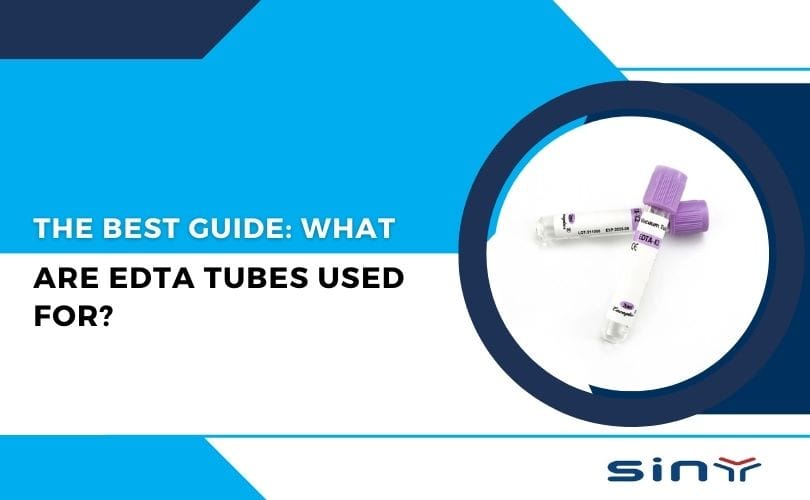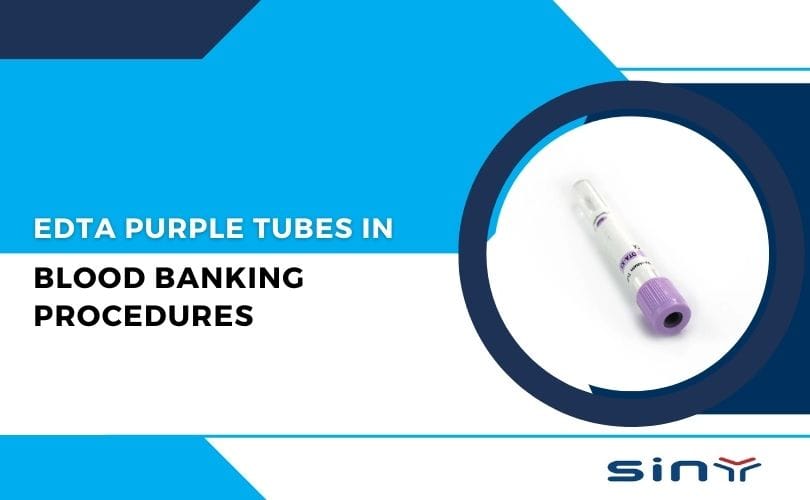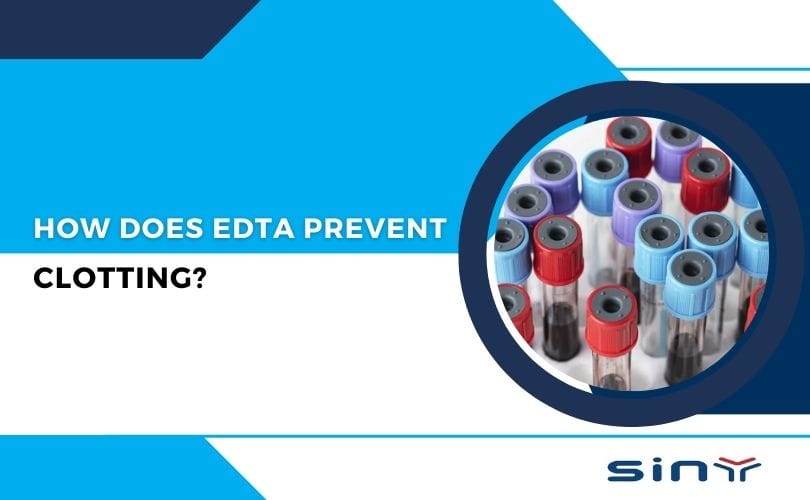When it comes to using EDTA tubes for blood collection and analysis, ensuring top-notch quality control is paramount. These tubes are widely used in medical laboratories for hematology tests, as they prevent blood clotting by binding calcium ions. However, improper handling or usage can lead to inaccurate results, compromising patient care. This comprehensive guide will walk you through the best practices and quality control tips for using EDTA tubes effectively.
Understanding EDTA Tubes: The Foundation of Quality Control
EDTA tubes are blood collection tubes containing ethylenediaminetetraacetic acid, a potent anticoagulant that binds calcium ions to prevent clotting. This makes them ideal for tests requiring whole blood or plasma, such as hematology and molecular diagnostics. Available in variants like K2 EDTA and K3 EDTA, these tubes are typically identified by their lavender or purple caps. Siny Medical’s EDTA tubes are designed to meet international standards, ensuring reliability and precision in diagnostic testing.
Types of EDTA Tubes
K2 EDTA Tubes: Contain two potassium ions in a spray-dried form, ideal for automated analyzers and molecular testing due to lower hyperosmolarity, which minimizes artifacts in blood cell morphology. These are perfect for tests like PCR and genetic screening.
K3 EDTA Tubes: Contain three potassium ions in liquid form, commonly used for routine hematology tests like CBC. They may slightly alter certain blood parameters due to their hypertonic nature. Learn more about K3 EDTA tubes.
Understanding the differences between K2 and K3 EDTA tubes is crucial for selecting the right tube for specific tests, as outlined in What is an EDTA K3 Tube? A Complete Guide. Choosing the appropriate tube type ensures sample stability and accurate results.
Common Applications of EDTA Tubes
EDTA tubes are versatile, supporting a range of diagnostic applications:
Hematology Tests: Essential for CBC, blood smears, and erythrocyte sedimentation rate (ESR) tests, preserving cell morphology for accurate cell counts and analysis.
Molecular Diagnostics: Stabilize DNA and RNA for genetic testing, such as PCR and sequencing, as detailed in EDTA Tubes for Blood Collection.
Blood Banking: Used for blood typing and crossmatching, ensuring safe transfusions with pink-top EDTA tubes.
Parasitology: Facilitate testing for blood parasites like malaria, preserving sample integrity for microscopic examination.
For a deeper dive into their applications, visit What is an EDTA Tube?.
Why Quality Control Matters in Using EDTA
Quality control in using EDTA tubes is critical to prevent errors that could affect patient outcomes. Improper handling, storage, or processing can lead to hemolysis, clot formation, or degradation of genetic material, rendering samples unusable. According to a study published in Clinical Chemistry and Laboratory Medicine, inadequate tube filling can introduce EDTA carryover, affecting molecular biology test results. By adhering to strict quality control protocols, laboratories can ensure reliable diagnostics and streamline workflows.

Key Quality Control Tips for Using EDTA Tubes
Select the Right EDTA Tube for the Test
Choosing the correct tube type is the first step in quality control. K2 EDTA tubes are preferred for molecular diagnostics due to their compatibility with automated systems, while K3 EDTA tubes are suited for routine hematology. Ensure the tube matches the test requirements to avoid artifacts. For example, Siny Medical’s 9ml K3 EDTA tube is designed for high-volume hematology testing, offering consistent performance.
Check Tube Integrity and Expiration Dates
Before use, inspect EDTA tubes for cracks, leaks, or contamination. Expired tubes may have reduced anticoagulant efficacy, leading to clotting or inaccurate results. Siny Medical’s tubes are certified for quality assurance, meeting CE and ISO standards, ensuring durability and reliability. Always verify the expiration date printed on the tube, as emphasized in Siny Medical’s product guidelines.
Proper Blood Collection Techniques
Correct blood collection is vital to maintain sample integrity:
Clean the Puncture Site: Use an alcohol swab to clean the venipuncture site, reducing contamination risk.
Use Appropriate Needle Gauge: A 21-23 gauge needle is ideal for most adults to minimize hemolysis.
Fill Tubes Correctly: Underfilling can lead to excess EDTA, causing cell shrinkage, while overfilling may dilute the anticoagulant. Aim for the fill line indicated on the tube, typically 2-10 ml depending on the tube size.
For detailed protocols, refer to Siny Medical’s EDTA tube guide.
Immediate Mixing of Samples
After collection, gently invert EDTA tubes 8-10 times to ensure the anticoagulant mixes thoroughly with the blood. Inadequate mixing can cause microclots, affecting test accuracy. Avoid vigorous shaking, which may cause hemolysis. This step is critical for tests like CBC, as highlighted in a PubMed article on EDTA’s role in hematology.
Proper Storage and Temperature Control
Storage conditions significantly impact sample quality:
Store at Room Temperature: Keep EDTA tubes at 4-25°C, as freezing can damage blood cells, compromising results. Avoid direct sunlight or extreme temperatures.
Process Promptly: Analyze samples within 4-6 hours for hematology tests or 24 hours for molecular diagnostics to prevent degradation. For extended storage, refrigerate (not freeze) samples for up to 48 hours for DNA testing.
Siny Medical recommends these practices to maintain sample integrity, as noted in their storage guidelines.
Avoid Cross-Contamination
Cross-contamination between tube types can skew results. For instance, using a citrate tube for a test requiring EDTA can interfere with calcium-dependent assays. Use color-coded caps (lavender for EDTA) to ensure correct identification. Siny Medical’s EDTA tubes are clearly labeled to prevent mix-ups.
Use Sterile and Single-Use Tubes
EDTA tubes are designed for single use to prevent contamination. Reusing tubes risks introducing pathogens or residual blood, compromising results. Siny Medical’s tubes undergo irradiation sterilization, ensuring safety and reliability, as detailed in their product specifications.
Compatibility with Laboratory Analyzers
Ensure EDTA tubes are compatible with your laboratory’s automated analyzers. K2 EDTA tubes are often preferred for their stability in automated systems. Siny Medical’s tubes are designed for seamless integration, enhancing workflow efficiency. Check compatibility details at Siny Medical’s product page.
Monitor for Hemolysis
Hemolysis, the rupture of red blood cells, can invalidate test results. To minimize hemolysis:
Use proper venipuncture techniques.
Avoid excessive suction during collection.
Store and transport samples gently to prevent mechanical damage.
A study in Diagnostics journal notes that proper handling of EDTA tubes reduces hemolysis risk, ensuring accurate hematology results.
Implement Regular Quality Control Checks
Conduct routine quality control audits in the laboratory:
Calibrate Equipment: Ensure analyzers are calibrated to handle EDTA-preserved samples.
Train Staff: Regular training on proper tube handling and processing is essential. Siny Medical offers resources for best practices, accessible via their contact page.
Monitor Sample Quality: Check for clots or hemolysis before analysis to avoid erroneous results.
Advantages of Using High-Quality EDTA Tubes
High-quality EDTA tubes, such as those from Siny Medical, offer several benefits:
Reliable Anticoagulation: Prevents clotting for accurate test results.
Cell Morphology Preservation: Ensures clear visualization of blood cells under a microscope.
Cost-Effectiveness: Reduces the need for repeat testing due to sample issues.
Global Standards Compliance: Certified by CE and ISO, ensuring safety and reliability.
Explore Siny Medical’s offerings on their YouTube channel for insights into their manufacturing process.
Siny Medical: Your Trusted Partner for EDTA Tubes
Siny Medical is a leading manufacturer of high-quality EDTA tubes, offering a range of products tailored to laboratory needs. With a production capacity of 500,000 tubes per day, they provide reliable, sterile, and affordable solutions. Their tubes are made from durable PET or glass, ensuring clarity and precision. For bulk orders or customized solutions, visit Siny Medical’s product page or their Made-in-China store.
Summary
Using EDTA tubes effectively requires attention to detail and adherence to quality control practices. From selecting the right tube to proper storage and handling, every step plays a crucial role in ensuring accurate test results. By following the tips outlined in this guide, you can enhance the reliability of your blood collection process and improve patient outcomes.
For high-quality EDTA tubes, visit our product page or contact us for more information.
FAQs
What is the difference between K2 and K3 EDTA tubes?
K2 EDTA tubes use a spray-dried anticoagulant, ideal for automated analyzers and molecular testing, while K3 EDTA tubes use a liquid anticoagulant, suited for routine hematology. Learn more at What is an EDTA K3 Tube?.
Can EDTA tubes be used for coagulation tests?
No, EDTA tubes are not suitable for coagulation tests as they bind calcium ions, which are essential for clotting assays. Use citrate tubes instead.
How should EDTA tubes be stored?
Store at room temperature (4-25°C), away from direct sunlight or extreme heat. Freezing can damage blood cells, as noted in Siny Medical’s guidelines.
How long can blood samples in EDTA tubes be stored?
For hematology tests, analyze within 4-6 hours. For molecular diagnostics, refrigerate samples for up to 48 hours. Prompt processing ensures accuracy.
Are Siny Medical’s EDTA tubes certified?
Yes, they meet CE and ISO standards, ensuring reliability and safety. Check their certifications at Siny Medical.
How do I contact Siny Medical for support?
Reach out via their contact page for inquiries about products or shipping.







